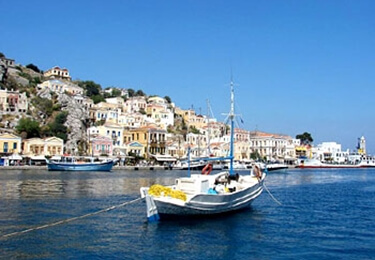 Kos is the island that gave the world Hippocrates, the father of medicine. The third largest of the Dodecanese, it is long and narrow in shape, mostly flat with two low mountains, Dikaio (875 m.) and Simpatro, that run along its southern coast. It is well watered, thus very fertile, and it's also very touristically developed.
Kos is the island that gave the world Hippocrates, the father of medicine. The third largest of the Dodecanese, it is long and narrow in shape, mostly flat with two low mountains, Dikaio (875 m.) and Simpatro, that run along its southern coast. It is well watered, thus very fertile, and it's also very touristically developed.
The island was first inhabited in the Neolithic era. In the 4th century B.C., its Asklepieion became famous as the leading "hospital" of antiquity.
The capital and main port, Kos, is situated in a verdant district on the north-east of the island, at the back of an open bay. Around the port you can still see the ruins of the ancient city and the castle, built between 1450 and 1478, after the Knights of St. John took over the island.
Excavations in the ancient city brought to light building foundations of the Classical era (e.g. the Agora) and of Hellenistic and Roman times (the Gymnasium, Odeon, Roman baths, a Roman mansion with beautiful mosaics), sections of wall from the Classical period, the foundations of a temple of Aphrodite and another temple, probably dedicated to Heracles. Many of the statues that were found are in the Archaeological Museum of the town.
Apart from the historical interest, Kos has many beautiful beaches: Lambi (the nearest one to town), the sandy beach of Tigaki, Marmari, Psalidi, Mastihari, Agios Fokas, and the very crowded Kardamena. You will spot many less crowded beaches near Kefalos bay.

